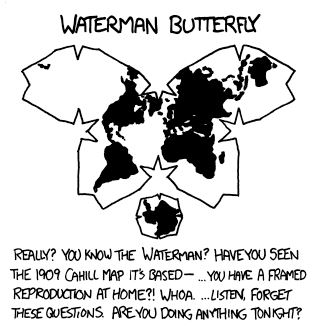





That isn’t part of the official training material:


Doesn’t CO poisoning trigger the mechanisms against suffrocation?


It’s supposedly the most humane method of execution.


The “policeman” was a member of the guardia civil, a paramilitary police (gendarmerie) and today still under a hybrid control by the ministries of interior and defence.
Indeed. It works on Eternity while the Lemmy-style doesn’t.


No:
Androgenic (body) hair is the terminal hair that grows on the body beginning puberty. It is distinguished from the head hair and less noticeable vellus hair that is much finer and lighter color.


The average is odd. It should be weighted by population, i.e. 67 %.


Or alternatively, a comma: I’m happy, killing beavers … is in the past now.

deleted by creator
Fulfilling their cliché, the Finnish seem to be chill people, so that they don’t need to take extra rest if they’re injured.
In German, it’s PECH (bad luck):
Exactly, unless it’s the cone of the circle is straight, i.e. the circle is around the (north) pole, the centers of the circles on the globe and on the map aren’t identical.
I get it now. The German Wikipedia article contains an explanation of my missconception:
Wichtig: Die Kreistreue gilt generell nur für die Kreislinie. Der Mittelpunkt des Objektkreises wird z. B. nicht als Mittelpunkt des Bildkreises abgebildet. Hiervon sind nur die Fälle, bei denen der Kreiskegel gerade ist, ausgenommen.
Important: The circle fidelity generally only applies to the circle line. The centre of the object circle, for example, is not depicted as the centre of the image circle. The only exceptions to this are cases where the cone of the circle is straight.
The Tissot thing to me looks like a visualization for the jacobian, so the factor by which the area at that point is scaled, plus the gradient.
Essentially, the tissot indicatrices are a visualization of the eigenvalues and eigenvectors of the projection in any point. So, in 2d, the areas of these ellipses correspond to the Jacobi determinant, the product of the two eigenvalues of the Jacobian at that point.
The circles in the stereographic projection are scaled, they are essentially pulled outwards, when further away from the center. This matches an increasing jacobian.
Exactly. The Jacobi determinant increases in radial direction (longitudinal on the globe).
But they stay circular, the stretching happens in the right way for that to hold true.
If you draw a circle on a globe, that is not coaxial to the parallels and apply the projection, the radius of said circle becomes elongated in outward direction in the same way the circles of the Tissot indicatrices increase in size.
Or in other words, any slice oncrement of the circle along a fixed degree of latitude changes in size depending on the value of the Jacobi determinant at that degree of latitude.
Thus, the circle on the globe becomes somehow like a rounded triangle on the map.
Edit: That shifts only the center of the mapped circle towards the outside of the original, but the circle remains a circle.
By small circles they mean circles on a sphere that are not an equator (great circle), not infinitessimally small circles. So basically they just mean circles.
This only applies to the circles perpendicular to the axis of projection, i.e. usually the circles of latitude (parallels), though. The Tissot indicatrices still show increasing sizes of the circles from the center of the map to its outside. Thus, any circle that isn’t coaxial with the parallels is distorted on the map.
There are projections where infinitesimal circles stay circles, e.g. our dear Mercator projection, but that doesn’t hold for finite sized circles, i.e. circles would still be distorted in north-south direction.
Tissot indicatrix


Weird
Bücherei, die
Bedeutung
kleinere [öffentliche] Bibliothek
Herkunft
Lehnübersetzung von niederländisch boekerij


No, you find it also in the West of Germany. The town’s libraries are usually or often named Stadtbücherei, whereas the larger state’s and university libraries are named Landesbibliothek or Universitätsbibliothek.